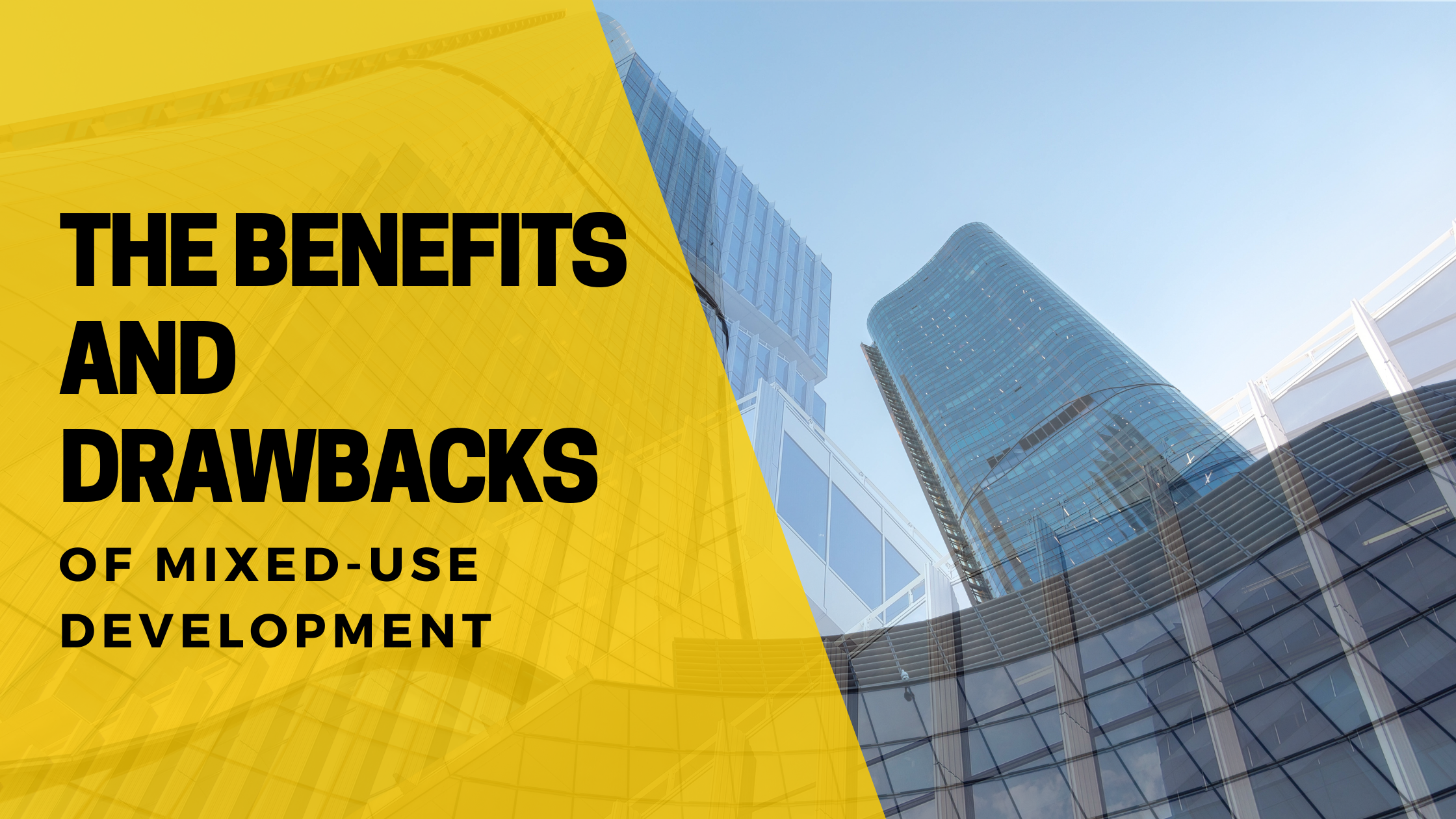
The Benefits and Drawbacks of Mixed-Use Development
Mixed-use development has become a buzzword in urban planning, lauded as a smart approach to creating vibrant, sustainable communities. By integrating residential, commercial, and sometimes industrial spaces within a single development, mixed-use projects aim to offer a host of conveniences and efficiencies that traditional, single-use developments often lack. However, despite the numerous advantages, there are several drawbacks and challenges that need to be considered. This article will delve into the benefits and drawbacks of mixed-use development, providing a balanced view of this modern approach to urbanization.
Benefits of Mixed-Use Development
1. Improved Community Dynamics
One of the most significant advantages of mixed-use development is the enhanced sense of community it fosters. By combining various functions such as living, working, and retail within a single area, these developments can create a vibrant, active neighborhood where residents feel more connected to their environment and each other. This can lead to stronger community ties and a more cohesive local culture.
2. Increased Convenience
Mixed-use developments offer unparalleled convenience. Residents can access a variety of amenities such as grocery stores, cafes, and gyms without the need to drive, thus saving time and reducing the reliance on cars. This accessibility also extends to public transportation, typically a focus in these kinds of projects, making it easier for people to commute efficiently.
3. Economic Efficiency
From an economic perspective, mixed-use developments are often more financially viable. They provide multiple revenue streams for developers, from residential rents to commercial leases. This diversified income can offer a buffer against market volatility, as a downturn in one sector (e.g., retail) may be offset by stability or growth in another (e.g., residential).
4. Environmental Benefits
Integrating multiple uses within a single development can lead to substantial environmental benefits. By reducing the need for residents to travel long distances for work or basic amenities, mixed-use developments promote walking and cycling, thereby reducing carbon emissions. Moreover, these projects often emphasize sustainable building practices and green spaces, contributing to a healthier urban environment.
5. Enhanced Property Values
Proximity to amenities and reduced commuting times often make mixed-use developments a desirable place to live, which can drive up property values. High demand for these properties can result in higher rental rates and property values, benefiting both developers and investors.
Drawbacks of Mixed-Use Development
1. Complexity in Planning and Zoning
One of the primary challenges of mixed-use development is the complexity involved in planning and zoning. Navigating the regulatory landscape can be cumbersome, as these projects often require special permits and must meet a variety of zoning requirements. This complexity can result in longer approval times and increased costs.
2. Higher Development Costs
The multifaceted nature of mixed-use projects often leads to higher initial development costs. Specialized construction techniques, the need for high-quality materials to appeal to different types of tenants, and the requirement for robust infrastructure can all inflate the budget. These increased costs can be a significant barrier for some developers.
3. Balancing Diverse Needs
Creating a harmonious environment that balances the diverse needs of residential, commercial, and possibly industrial users can be challenging. Noise levels, parking requirements, and security concerns can all vary greatly between different types of tenants, making it difficult to satisfy everyone. Failing to address these issues adequately can lead to tenant dissatisfaction and higher turnover rates.
4. Risk of Over-Development
There is also a risk that mixed-use developments can lead to over-development in certain areas. Concentrating too many amenities and services within a small area can strain local infrastructure and resources, resulting in overcrowding and decreased quality of life. This can negate some of the benefits these projects aim to provide.
5. Market Risk
While the diversified income streams of mixed-use developments can provide stability, they also expose the project to a broader range of market risks. A poorly performing retail sector can negatively impact the overall desirability and financial viability of the entire development. Similarly, shifts in economic conditions or consumer preferences can affect demand for different types of spaces within the development.
Mixed-use developments certainly offer a forward-thinking approach to urban planning, aimed at creating more dynamic, convenient, and sustainable communities. The benefits, such as improved community dynamics, increased convenience, economic efficiency, environmental benefits, and enhanced property values, are compelling. However, the drawbacks - including planning and zoning complexity, higher development costs, the challenge of balancing diverse needs, risk of over-development, and exposure to market risks - also need careful consideration.
Developers, planners, and policymakers must weigh these pros and cons carefully when considering mixed-use development projects. A thoughtful, strategic approach can help mitigate the drawbacks while maximizing the benefits, ensuring that mixed-use developments contribute positively to the fabric of our urban landscapes. Ultimately, while mixed-use development is not a one-size-fits-all solution, when executed well, it holds the potential to significantly enhance the way we live, work, and interact within our cities. If you are looking to achieve financial freedom through passive investing, or looking for support while you actively invest in the real estate market, reach out to me at mel@paramountrealestate.ca and let’s discuss how we can help you reach your goals.
Disclaimer: This blog post provides general information and discussions about the commercial real estate market in Ontario. The information and other content provided in this blog post, or in any linked materials, are not intended and should not be construed as financial or investment advice. The views expressed in this blog post are those of the author and do not necessarily represent the views of any other person, company, or organization. The author does not guarantee the accuracy or completeness of any information in this blog post and is not responsible for any errors or omissions or for the results obtained from the use of such information. The author assumes no liability or responsibility for any damage to you, or other property, due to your access to, use of, or downloading of this blog post or any materials provided within.


